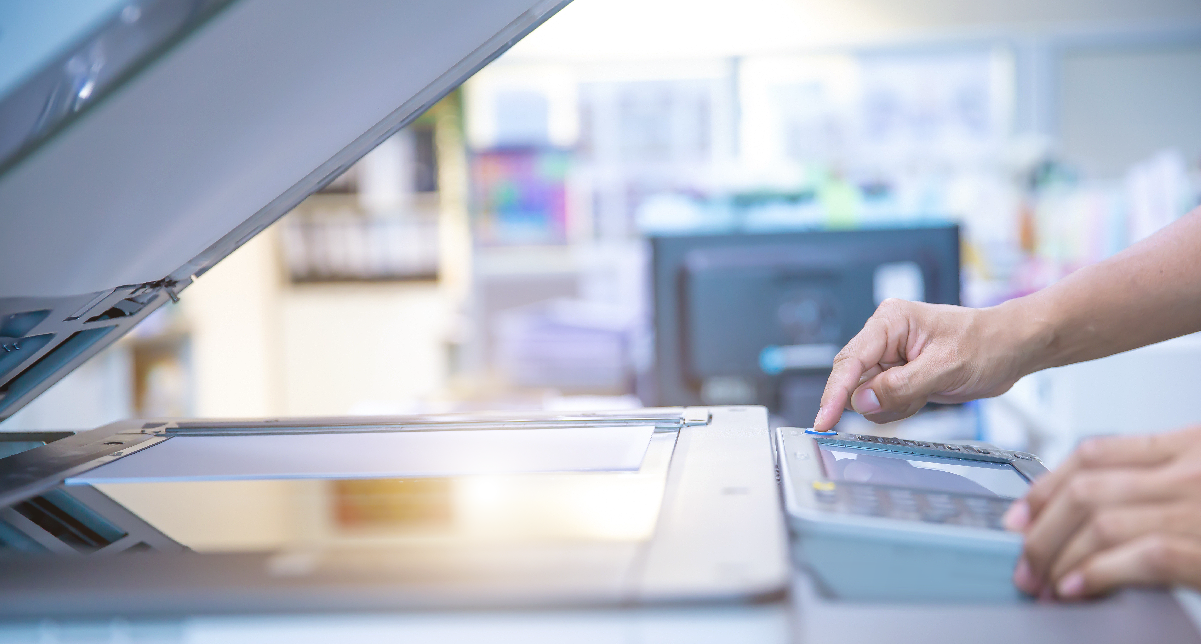3 min read
Building Culture That Works: Cobb Tech Named One of VA's Best
Cobb Technologies has been honored as one of the 2025 Best Places to Work in Virginia by Virginia Business and Best Companies Group. This prestigious...
2 min read
 Steven Kadak
Jul 1, 2024 11:08:43 AM
Steven Kadak
Jul 1, 2024 11:08:43 AM

In the age of cyber threats, even the humble printer can pose a significant risk to your office's security. From confidential documents left unattended on output trays to unsuspecting USB ports waiting to be compromised, every aspect of your print environment demands careful consideration.
Here are six often overlooked security risks that might be lurking within your print environment:
Take a moment to glance at your printer or copier's output tray. Are there sensitive documents lying there, accessible to anyone passing by? Sensitive documents left unattended on output trays pose a significant security risk.
These documents can contain confidential information such as financial records, client data, or proprietary business plans. If left unattended, they may be accessible to unauthorized individuals, potentially leading to data breaches or confidentiality breaches.
Tip: Implement a "pull-printing" system where print jobs are only released when the user is physically present and authenticated at the printer. This can be done through methods such as implementing PIN codes or employee badges.
Enabling the USB port on your printer may seem convenient for printing directly from USB drives. However, it also introduces a security vulnerability. Malicious actors can exploit this feature by inserting infected USB drives, compromising the printer's security, and potentially infiltrating your network. Disabling the USB port mitigates this risk and enhances overall security.
Tip: Disable USB ports on your printers if they are not needed. If USB functionality is required, implement access control measures to establish who has access to the USB port. This can include restricting access solely to authorized personnel, and instating an access control list that specifies which users have permission to utilize the USB port.
Modern toner cartridges often come equipped with computer chips that track toner levels and send a notification when low. While these chips provide useful functionality, they also present a security risk.
Hackers can exploit vulnerabilities in these chips to gain unauthorized access to your network, thus posing a threat to your data security. Regularly updating printer firmware and implementing robust security measures can help mitigate this risk.
Tip: Regularly update your printer firmware to patch any security vulnerabilities. Additionally, if you have an HP printer, consider using only Original HP office printer cartridges. These OEM toner cartridges contain tamper-resistant HP firmware that helps prevent modification by third parties.
Printers with unrestricted access present a significant security risk. Without authentication measures such as PIN codes or card readers, anyone can walk up to a printer and use its functions, potentially compromising sensitive documents or initiating unauthorized print jobs.
Tip: Implement authentication protocols or department codes to help restrict access and prevent unauthorized usage of your printers.
At the end of a printer lease, it's essential to properly dispose of the hard drive to prevent data breaches. Hard drives in printers often store sensitive information such as print job histories and document data. Improper disposal can lead to data breaches, as sensitive information may still be retrievable if not adequately destroyed.
Tip: Ensure that hard drives are either physically destroyed or securely wiped using professional data destruction services before disposing of old printers.
Documents discarded near printers can pose a significant security risk if they contain sensitive information. Unauthorized individuals may rummage through trash or recycle bins to retrieve discarded documents, potentially exposing confidential data.
Tip: Implement secure document disposal practices by using shredders or secure disposal bins for any sensitive documents. Regularly train employees on the importance of secure document disposal.
By addressing these six security risks, you can enhance the protection of your office environment and safeguard sensitive information from potential threats. For personalized guidance and comprehensive security solutions tailored to your business needs, contact us today.
Want to learn more about securing your business' data? Visit our blog!

3 min read
Cobb Technologies has been honored as one of the 2025 Best Places to Work in Virginia by Virginia Business and Best Companies Group. This prestigious...

5 min read
Cobb Technologies is honored to hold the SWaM (Small, Women-owned, and Minority-owned Business) certification, awarded by the Commonwealth of...

5 min read
Every year, thousands of Veterans transition from military service to civilian careers in Virginia, bringing invaluable skills and experiences to...